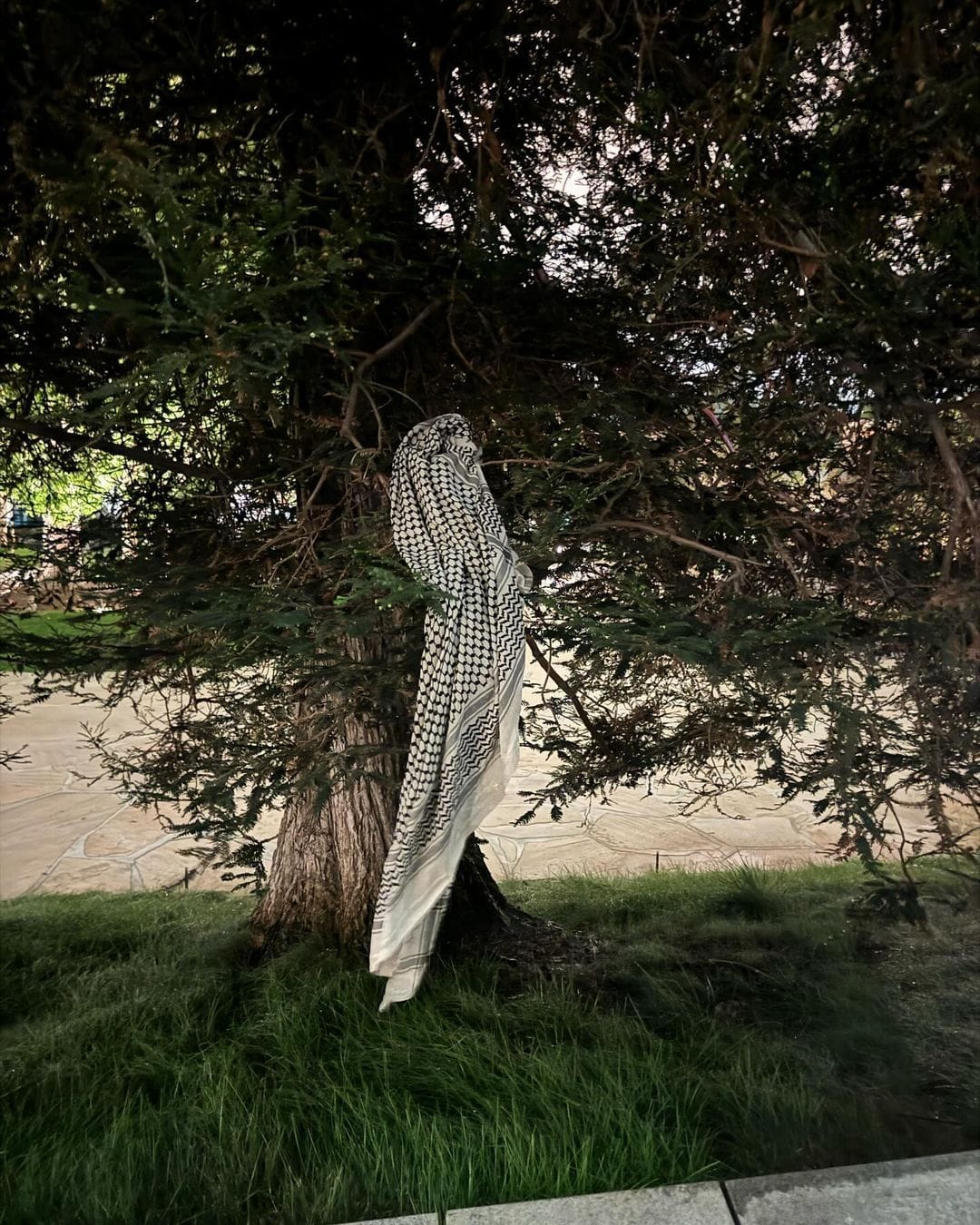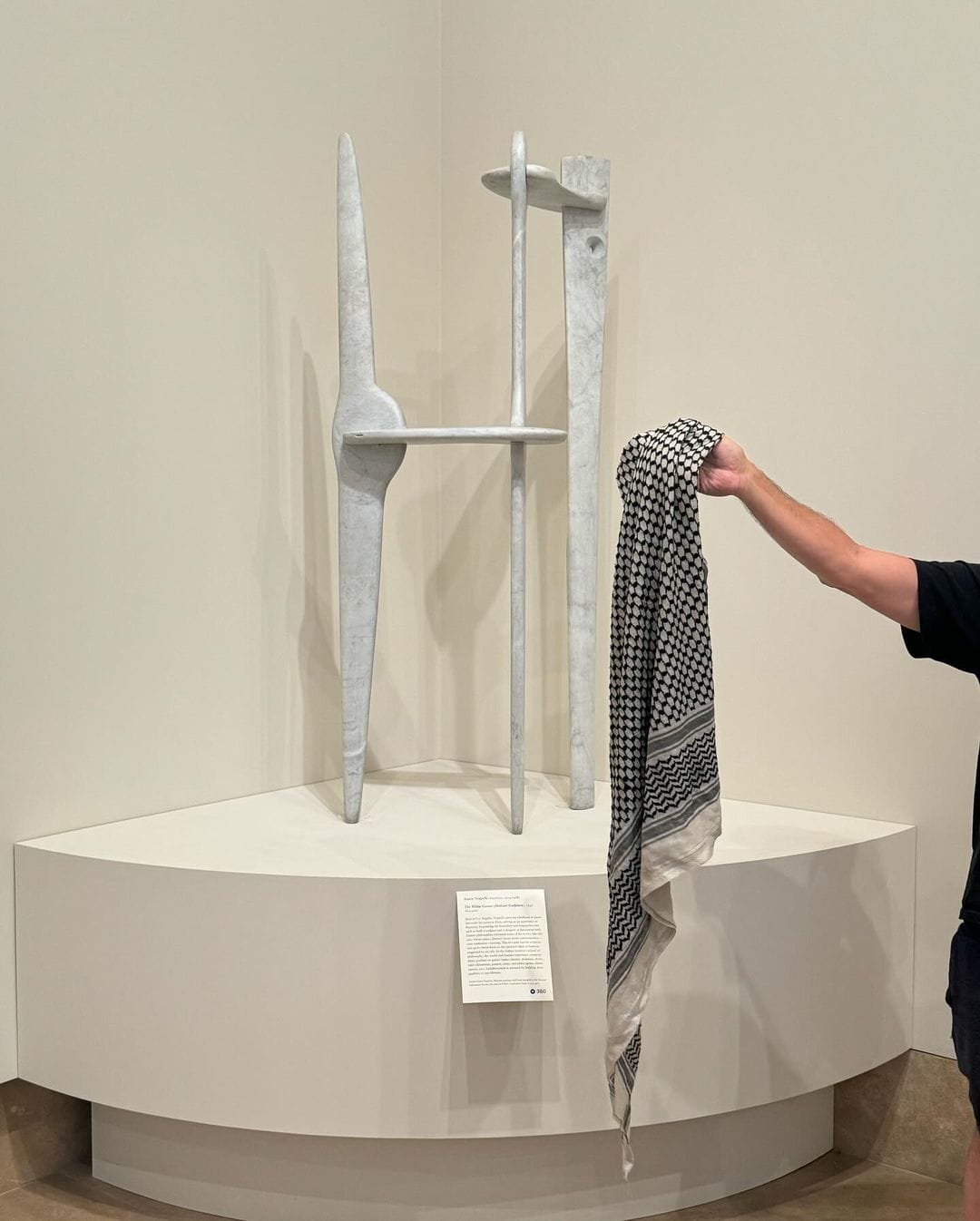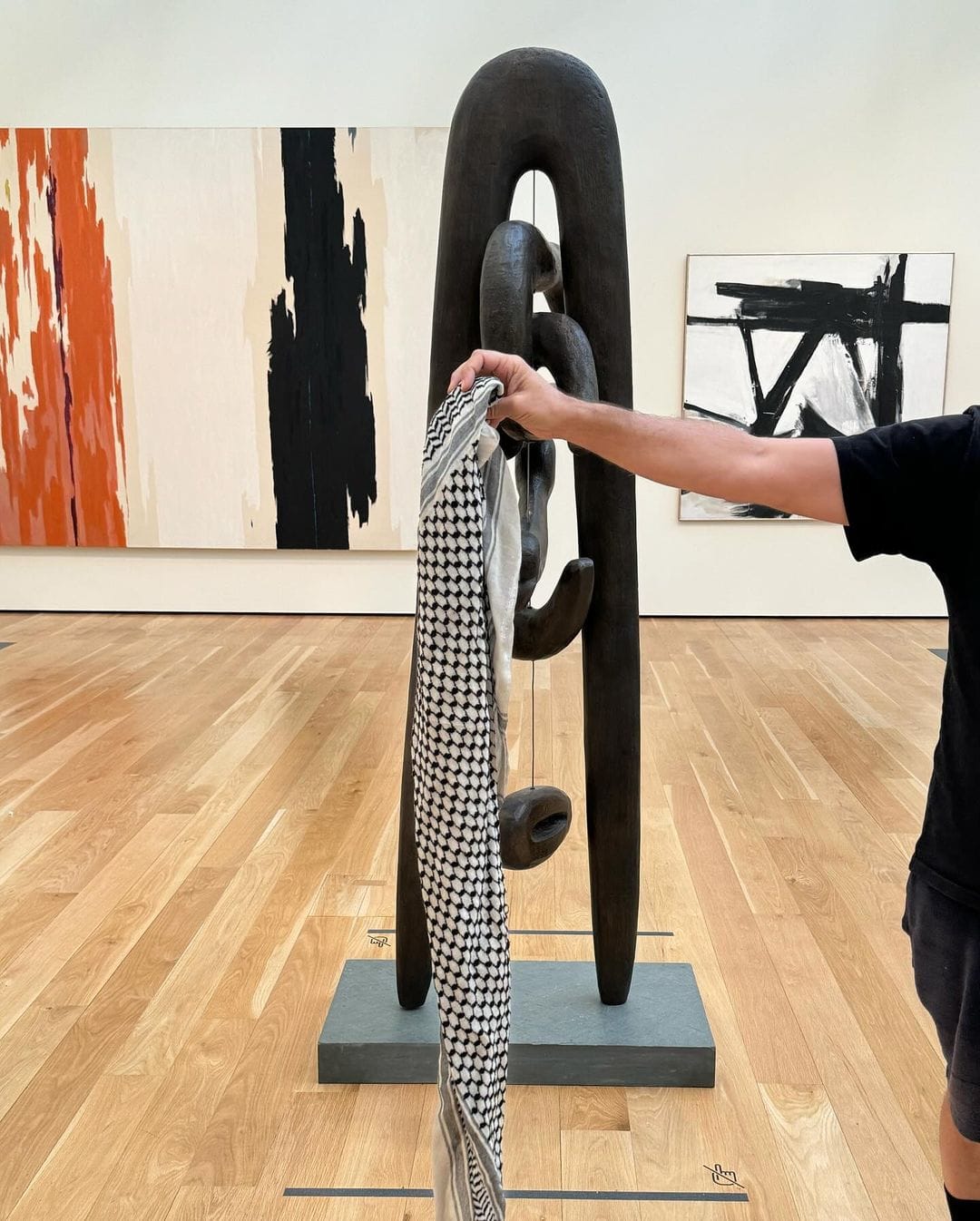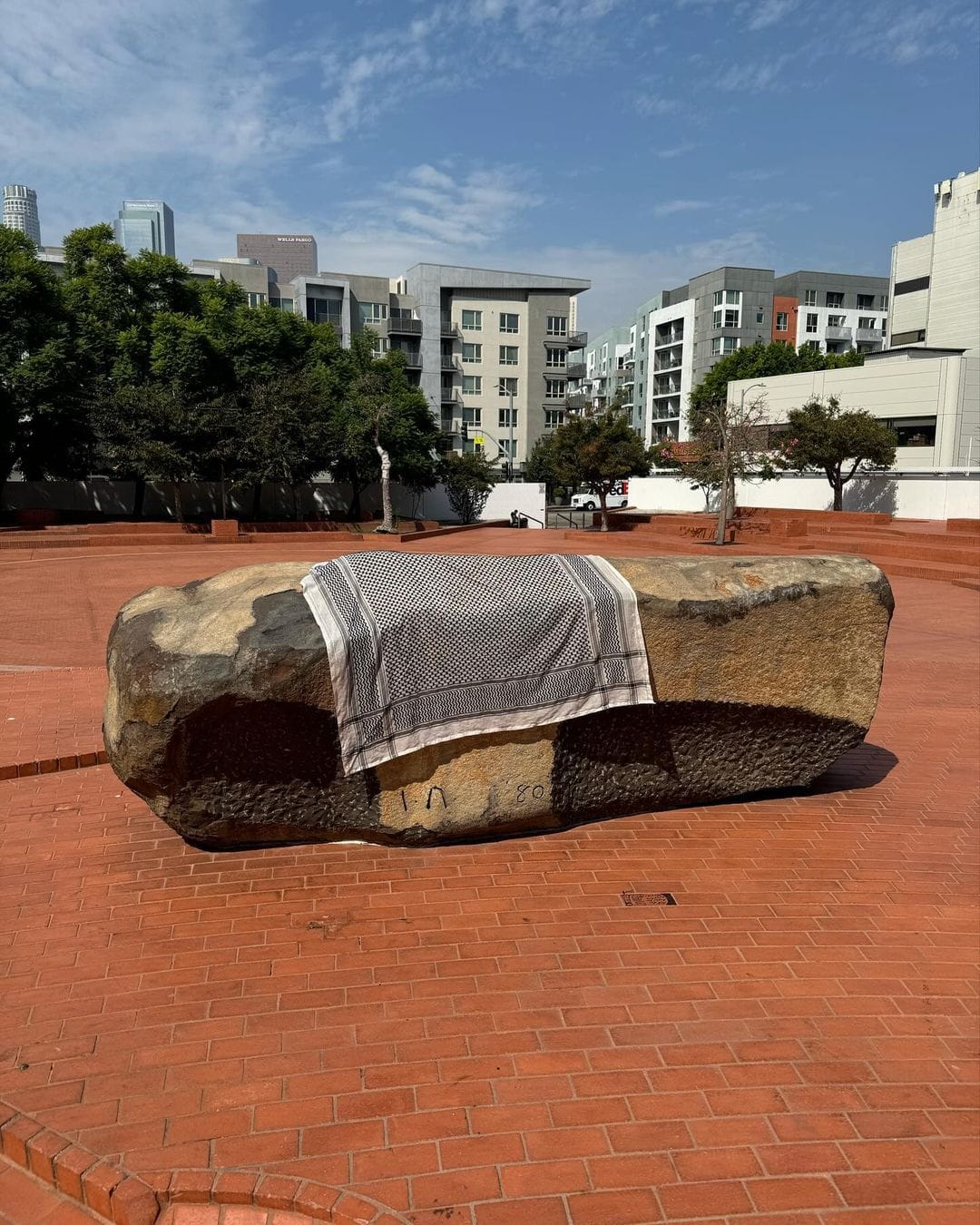Early in September 2024, three employees at the Noguchi Museum, New York were fired for wearing the kufiya to work. The kufiya is a garment that symbolizes their solidarity with Palestinians currently invaded by Israeli forces. The museum then released a statement that their dress code called for all employees to not betray any “political statement.” Since then, over 50 employees have signed a petition to reverse this policy. Renowned writer Jhumpa Lahiri also expressed solidarity with the employees by declining an award from the museum in protest.

To further protest the move, artist duo David Horvitz and Ali Eyal have published a series of photographs in which they have draped the kufiya over different Noguchi sculptures in Southern California. When doing so, the duo was careful to ensure the preservation of the sculptures. They would only drape the kufiya over public art sculptures meant to be touched by visitors. Meanwhile, when it comes to pieces in a museum, they would simply photograph one of them holding the kufiya in front of the work at a safe distance.

Their kufiya protest becomes even more powerful when people learn that the kufiya used in the photographs belonged to Eyal’s father, one half of the duo who has witnessed firsthand the cruelties of war in the Middle East. Iraq-born Eyal's father was abducted by militia in 2006. This cost his family everything. Since then, Eyal has carried the kufiya as he moved from country-to-country in 2016 before finally settling in Los Angeles.

Meanwhile, Horvitz, the other half of the duo, is himself a Japanese American whose parents were imprisoned in internment camps in the US during World War II. Ridden with displacement, incarceration and torture, the artists’ personal backgrounds are testaments to the necessity of their anti-war pieces. This is why the kufiya drapings by David Horvitz and Ali Eyal are aligned with the United Nations Sustainable Development Goals of Peace, Justice and Strong Institutions and Reduced Inequalities.

Like Horvitz, Isamu Noguchi, the genius behind the Noguchi Museum, was a Japanese American. Despite his fame and success in 1942, Noguchi voluntarily chose to be incarcerated in the Japanese American internment camps. He did so to protest the cruel realities of war, a move that the Noguchi Museum, an institution that promises to uphold his legacy, has instead chosen to censor. This is a strange irony that David Horvitz and Ali Eyal are highlighting, as history has shown that Isamu Noguchi himself would have preferred to put his own life on the line to protest war and oppression.
Find out more about the kufiya drapings and other pieces by Ali Eyal on his website www.alieyal.com or Instagram @alieyalnostudio and David Horvitz on www.davidhorvitz.com or @davidhorvitz.
